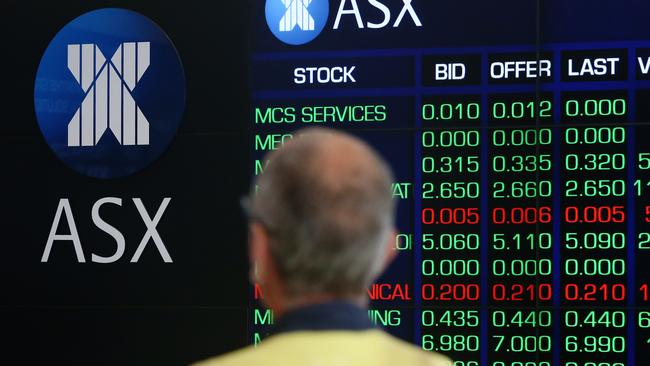Five reasons sharemarkets bounced back from Covid crunch

Initially, its impacts were extremely negative. Indeed, as the pandemic spread, as lockdowns and social distancing rules were introduced and as supply chains were disrupted, expectations were that many countries, including the US and Australia, would experience contractions of 10-20 per cent in their GDP within a year.
In five weeks of extreme gloom to late March, average share prices plunged by more than a third.
As things turned out, overall economic activity and average share prices held up better than expected.
China and Australia have had, respectively, three and two quarters of economic recovery; and the US has a good economic rebound in prospect.
Talk of the global slump being U-shaped, L-shaped, W-shaped or like the Nike swirl has faded and been replaced by more and more suggestions of a deep-V in global economic conditions.
In recent weeks, average share prices had recovered much (or all) of the steep falls suffered when the pandemic hit. Once again, investors have re-learnt the importance of sensible diversification and that the best time to buy quality shares is during a severe financial crisis. Also, the dollar has risen by 40 per cent from its low point in March; and the median house price here — earlier judged likely to fall by 20 per cent — is rising again.
The strong recovery in business conditions and sharemarkets over the past six months reflect these influences:
● In just about every financial crisis, this one included, business confidence and market sentiment initially overreact to the gloom. Space for a rebound is created.
● This time around, fiscal and monetary easing has been on a massive scale. In the US and Australia, for example, federal governments have hugely expanded their budget deficits.
● In March, Netflix and Zoom were considered to head the shortlist of US businesses to maintain good earnings in a Covid-led global recession. Later, other big US tech stocks and many other businesses announced strong profits.
In Australia, JB Hi-Fi, Harvey Norman and the iron ore producers have delivered improved earnings, and even the much-criticised banks are again moving back into favour. The boost from macroeconomic policies is encouraging the view that aggregate corporate profits will be on a recovery path earlier than earlier expected.
● Many investors have widened their assessments of sharemarket valuations, beyond the traditional emphasis on prospective price-earnings multiples, which look somewhat stretched. They’re allowing also for the beneficial effects on average share prices of very low interest rates for another year or two — which raise today’s valuations of future earnings and encourage the hunt for dividends.
● The discovery and mass production of vaccines has added to confidence in the economic recovery and strengthened sharemarket sentiment.
Of course, there’s a lot to worry about. Globally, Covid-19 infection levels are high, and third and fourth waves can’t be ruled out, particularly if vaccines lose effectiveness as the virus mutates.
Investors fear “missing out” on the boom in share prices and are rushing into new listings. As mentioned, prospective price-earnings multiples can look stretched.
And concerns that inflation could reappear are again being heard. Recently, 10-year government bonds yielded 1.1 per cent in the US and Australia, but the pricing of bonds suggested investors were expecting inflation in the US and here to average, respectively, just 2 per cent and 1.8 per cent annually over the next 10 years.
At times, bond markets could become jumpy.
My view is that the overall pace of the global upswing in 2021 will again exceed expectations, mainly because the continuing fiscal largesse and the gritty determination of central banks to keep interest rates at very low levels. But more good news is incorporated in average share prices than was the case even three to six months ago.
Shares could offer modest gains over six to 12 months, but stock selection will be challenging, both from existing listings and, particularly, from new floats. Holding onto a little extra cash to be able to buy shares on weakness would seem to make sense.
Don Stammer is an adviser to StanfordBrown Private Wealth. The views expressed are his alone.
don.stammer@gmail.com






For 12 months, Covid-19 has been the dominant influence on the global economy and investment markets.